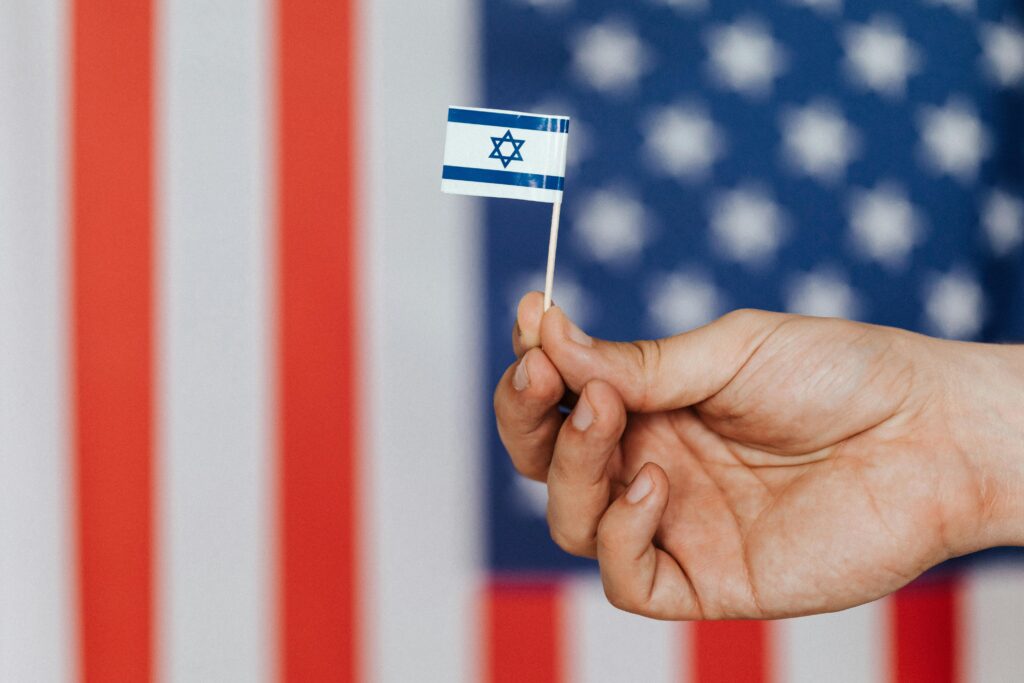How Long will Trump’s ‘Carte Blanche’ for Netanyahu Last?

By: Laila Mamdouh / Arab America Contributing Writer
On Monday evening, the White House hosted a highly anticipated meeting between President Donald Trump and Israeli Prime Minister Benjamin Netanyahu. This encounter, set against the backdrop of the ongoing Gaza Genocide, marks a pivotal moment in the ever-evolving relationship between the two leaders. Once represented by unwavering support, their political partnership has been reshaped by the devastation in Gaza, shifting regional dynamics, and personal resentments that have extended to the public sphere.
The Trump-Netanyahu Relationship: From Alliance to Strain
When President Trump first took office in 2017, his administration’s approach to Israel was marked by unprecedented support for Netanyahu’s government. As Barak Ravid from AXIOS says, Trump moved the U.S. Embassy to Jerusalem, recognized Israeli sovereignty over the Golan Heights, and withdrew from the Iran nuclear deal, actions that strengthened Netanyahu’s domestic standing and cemented Trump’s reputation as “the most pro-Israel president in U.S. history”. Their alliance seemed unbreakable, with both leaders using such a partnership for political gain at home.
Gaza as a Focal Point and Its Impact on U.S.-Israel Relations
However, behind the scenes, tensions were rising. The Israeli military’s repeated attacks in Gaza and the genocide of the Palestinians have exposed deep grievances in the Trump-Netanyahu relationship. As Stephan Prager from Common Dreams puts it, Trump’s initial support for Israel’s actions in Gaza, often described as giving Netanyahu “carte blanche,” was because of a shared desire to weaken Hamas and reshape the region. Yet, as civilian casualties skyrocketed and global condemnation grew, Trump’s willingness to provide absolute support began to change.
The current war in Gaza has resulted in catastrophic loss of life and widespread destruction, with over 30,000 Palestinians killed and entire neighborhoods reduced to rubble. The international community, including the United Nations and leading human rights organizations, labeled Israel’s actions as genocide, rightfully so. Trump’s administration, while initially reflecting Israeli goals, has faced mounting pressure from activists, lawmakers, and certain parts of the American Jewish community to reconsider its stance.
Trump’s Calculated Distance
In recent months, Trump has showcased a willingness to use U.S. leverage such as military aid, diplomatic cover, and public support to pressure Netanyahu toward a ceasefire and a negotiated settlement (CNN). Analysts suggest that Trump’s shift is driven less by humanitarian concerns and more by political calculation: distancing himself from Netanyahu’s increasingly controversial policies, appeasing domestic critics, and positioning himself as a potential peacemaker worthy of the Nobel Prize (New York Post). This recalibration is different from the “carte blanche” (get out of jail free card) era. This highlights the central role that Gaza now plays in the U.S.-Israel relations.
Monday’s White House Meeting: Why It Matters
Monday’s meeting between President Trump and Prime Minister Netanyahu was filled with symbolism and diplomatic theater. Netanyahu’s presentation of a letter nominating Trump for the Nobel Peace Prize was a calculated gesture, intended to flatter the president and reinforce the ongoing narrative of American-Israeli partnership. Yet, beneath the surface, the discussions were anything but ceremonial. The agenda was sharply focused on pressing economic and security concerns, most notably, tariffs and the escalating situation with Iran. Both leaders recognized the high stakes, as they discussed the future of regional stability and the economic levers that could be used to influence outcomes in the Middle East.
Shifting Agendas: From Tariffs and Iran to Gaza’s Crucial Crossroads
As attention turns to Tuesday, the agenda is likely to undergo a major shift as President Trump made it clear that the conversation will be exclusively about Gaza and the urgent need to address the ongoing crisis. “He’s coming over later. We’re going to be talking about, I would say almost exclusively, Gaza,” Trump stated. “We gotta get that solved.” This pivot highlights the severity of the situation in Gaza and the escalating international pressure for a resolution (NBC News).
Steve Witkoff, serving as a special envoy, emphasized the intensity and proximity of the ongoing negotiations, stating, “We are hopeful that by the end of this week, we will have an agreement that will bring us into a 60-day ceasefire. Ten live hostages will be released. Nine deceased will be released.” These remarks highlight the stakes of Tuesday’s meeting, not just for the immediate parties involved, but for the broader prospects of peace and stability in the region (NBC News).
The implications of this shift are profound. While Monday’s talks reflected the broader geopolitical and economic interests binding the U.S. and Israel, Tuesday’s meeting places the humanitarian crisis in Gaza at the forefront. The world is watching to see whether this renewed focus can yield tangible progress toward a ceasefire and the release of hostages, or whether the cycle of violence and diplomatic gridlock will persist. The outcome of these discussions could redefine the parameters of U.S.-Israel relations and set a precedent for how both nations navigate future crises in the Middle East (New York Times).
Trump’s Meetings with Other World Leaders: Netanyahu’s Unique Case
Trump’s approach to meetings with world leaders is often marked by theatrical gestures, typically centering on swift, high-impact deals. When engaging with figures like King Abdullah II of Jordan or President Volodymyr Zelensky of Ukraine, Trump’s interactions have tended to be more transactional and less personal, often revolving around strategic interests like security cooperation or regional stability, resulting in a relationship defined by negotiation and leverage rather than camaraderie.
In contrast, the Trump-Netanyahu relationship stands out because their political, strategic, and personal interests have been closely aligned, fostering a unique sense of partnership and mutual investment. Unlike Trump’s interactions with leaders such as President Zelensky of Ukraine, where interests may overlap but often diverge due to differing regional priorities, Trump’s dynamic with Netanyahu has been characterized by a strong convergence of objectives, particularly regarding Middle East policy and security. This alignment has made Trump far more willing to invest political capital, offer public support, and engage deeply with Netanyahu than with other world leaders. However, the Gaza conflict has transformed their alliance from one of mutual benefit to one fraught with tension, mistrust, and public recrimination (Jewish Currents).
The End of ‘Carte Blanche’ and the Uncertain Road Ahead
The Monday and Tuesday meetings are more than diplomatic rituals; they are a referendum on the future of the U.S.-Israel relations and the fate of Gaza. The genocide in Gaza has fundamentally altered the political stance for both Trump and Netanyahu, exposing the limits of unconditional support and forcing both leaders to navigate new realities at home and abroad.
For Gaza, the hope for a ceasefire and humanitarian relief hangs in the balance. For Netanyahu, the loss of American support could mean political disaster. And for Trump, his legacy in the Middle East will be defined by whether he can pivot from unconditional support to principled leadership in the face of genocide. The world is watching, and the outcome will shape the course of history in the region.
The fate of Gaza and the prospects for peace in the Middle East may well depend on the choices made behind closed doors in the White House this week.
Want more articles like this? Sign up for our e-newsletter!
Check out our blog here!








